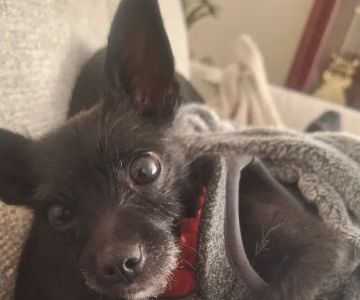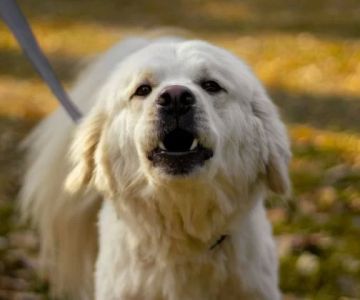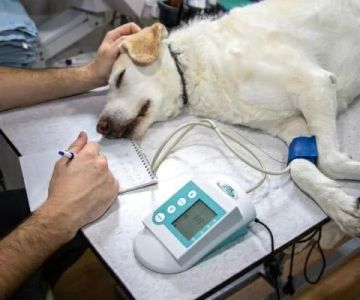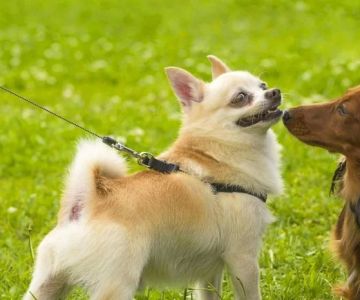- 1-Understanding Dog Greeting Behavior
- 2-Effective Training Techniques
- 3-Common Mistakes and How to Avoid Them
- 4-Real-Life Success Stories
- 5-Why Choose Hidden Brook Veterinary for Training Support
1. Understanding Dog Greeting Behavior
When dogs greet people, their excitement often takes over — jumping, barking, or pawing are natural expressions of joy and curiosity. However, while these behaviors might seem harmless, they can be overwhelming or even intimidating to guests. Training your dog to greet politely is not about suppressing enthusiasm; it’s about channeling it into calm, appropriate behavior.
Dogs are social animals who learn greeting habits based on human response. If a dog jumps and receives attention, even negative attention, the behavior is reinforced. Understanding this psychological loop is the first step in helping your dog develop better manners. Consistency, patience, and positive reinforcement form the foundation of successful dog training.
2. Effective Training Techniques
2.1 Teaching the “Sit and Stay” Command
Begin by training your dog to sit and stay before guests approach. This command acts as a behavioral reset, helping your dog remain calm and focused. Use treats or favorite toys as rewards when they sit quietly during greetings. Practice this daily, starting in quiet environments and gradually introducing distractions like visitors or outdoor noises.
2.2 Reward Calm Behavior
Dogs thrive on positive reinforcement. Rewarding calm, non-jumping behavior teaches them that good manners lead to good things. When guests arrive, ignore your dog until they calm down. Once they’re sitting or standing quietly, reward them with gentle praise or a treat. Over time, they’ll associate calm greetings with positive outcomes.
2.3 Desensitizing to Exciting Situations
Desensitization involves gradually exposing your dog to stimulating situations while maintaining control. Invite friends over for short visits and practice greetings repeatedly. Keep sessions brief and positive. This teaches your dog to handle excitement without losing composure. Remember: progress may take weeks, but patience pays off with lasting results.
2.4 Use Leashes and Boundaries
In the early stages of training, a leash can be a valuable tool for managing behavior. Keep your dog on a short leash when greeting guests, guiding them into a sitting position before allowing interaction. Establish a “greeting zone” near the door to help your dog understand boundaries and routines.
3. Common Mistakes and How to Avoid Them
Many dog owners unknowingly reinforce unwanted behaviors. For instance, greeting an excited dog with enthusiastic energy or allowing them to jump can undo days of progress. Avoid yelling or physical corrections — these can create anxiety and worsen behavior. Instead, stay calm and consistent. If your dog becomes too excited, have them sit or redirect their focus before continuing the greeting.
Another common mistake is inconsistency among family members. Everyone in the household should follow the same training rules and commands. If one person allows jumping while another discourages it, the dog receives mixed signals, slowing progress. Consistency is key to long-term success.
4. Real-Life Success Stories
Consider the story of Bella, a lively Labrador who loved to jump on guests. Her owner, frustrated after months of struggle, implemented structured greeting sessions with positive reinforcement. Within eight weeks, Bella learned to sit calmly when visitors arrived. Friends who once dreaded her enthusiasm now comment on her gentle demeanor.
Another example is Max, a rescue dog with anxiety who barked uncontrollably during greetings. His trainer introduced gradual desensitization and reward-based sessions, helping Max learn that calm behavior earns attention. Today, Max confidently greets visitors without barking or jumping, proving that every dog can learn with patience and the right guidance.
5. Why Choose Hidden Brook Veterinary for Training Support
At Hidden Brook Veterinary, we understand that every dog has a unique personality and learning pace. Our experienced trainers and behavior specialists offer customized training programs designed to address greeting manners and other common behavioral challenges. Whether your dog is a playful puppy or an older companion, our humane and science-based methods ensure lasting results.
Hidden Brook Veterinary also provides access to expert resources, from personalized behavior consultations to high-quality training products. By combining professional support with consistent practice at home, you can transform your dog’s behavior and make every greeting a pleasant experience for both your pet and your guests.











